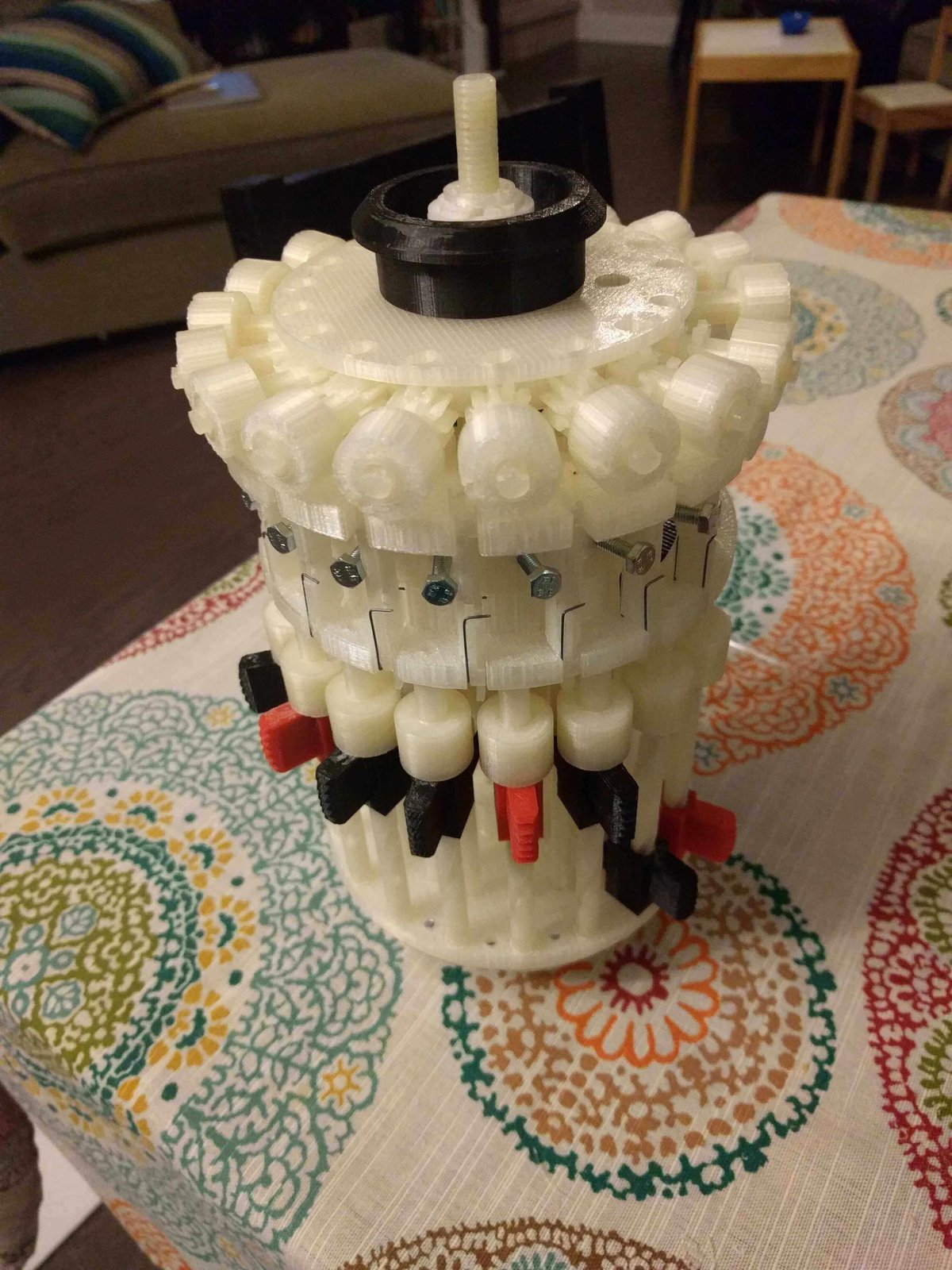Working from the original blueprints, maker Marcus Wu has 3D printed a mechanical Curta Calculator. And it’s bloody marvelous.
When someone tells you that something cannot be done… Ignore them. Because that’s the reaction that Marcus Wu got when he said he was going to 3D print a mechanical Curta Caculator. And 18 months later, he’s completed a working model.
For the uninitiated, the Curta Calculator is a marvel of mechanical engineering. The original is a gleaming black cylinder with a crank at one end, and the approximate size and shape of a pepper mill.
It’s not much use for garnishing a plate of steak and chips. But it is amazing for crunching numbers, and not a single battery is required to power it. It’s actually a stepped drum mechanism containing 605 intricate parts, and is capable of addition, subtraction, multiplication, division, and even square roots.
The Curta Calculator was in general production for a short time between 1940s to the 1970s. You can see a great video demonstration of the original Curta on Tested. And you can read more about its history over at Gizmodo UK (written by yours truly). The story of its invention is as incredible as the Curta itself.
For his replica, Wu printed the Curta at 3:1 scale on a gMax 1.5 3D printer with an E3D Chimera hotend. The reason for the increased size is because consumer grade 3D printers are not capable of producing the same delicate tolerances as the original Curta.
The modeling was all done by Wu based on the original engineering drawings. See a video of the 3D printed Curta in action below:
Curta Calculator Heading to Maker Faire
Now that the project is complete, Wu has been invited to the Charlotte Mini Maker Faire on 8 October 2016 to demonstrate his model.
Wu also says that at some stage he’ll be sharing his STL files so others can attempt to build their own Curta. But because there are hundreds of individual files for such a complicated project, pulling them all together will take time.
As such, the project looks extremely complicated and not for the faint of heart. Wu says one of the difficulties he encountered was:
“Trying to figure out how to accomplish certain aspects of the build with a 3D printer. Things like making the tolerances tight enough (the engineering drawings call for tolerances in thousandths of a millimeter in some places).”
He also labored over tweaking support structures in Simplify3D. “I have kept the design mostly the same rather than modify it to eliminate the need for supports,” he said. “Simplify3D makes life much easier, but getting the settings right is still paramount”.
There’s one other positive impact this replica may have. It could bring down the extortionate prices demanded on eBay for an original Curta. If not, then additive manufacturing techniques are improving all the time. We look forward to the day when we can print and play with a 1:1 scale model.
Check out Wu’s blog for a complete breakdown of his progress with the Curta Calculator.

License: The text of "This 3D Printed Curta Calculator is a Mechanical Marvel" by All3DP is licensed under a Creative Commons Attribution 4.0 International License.